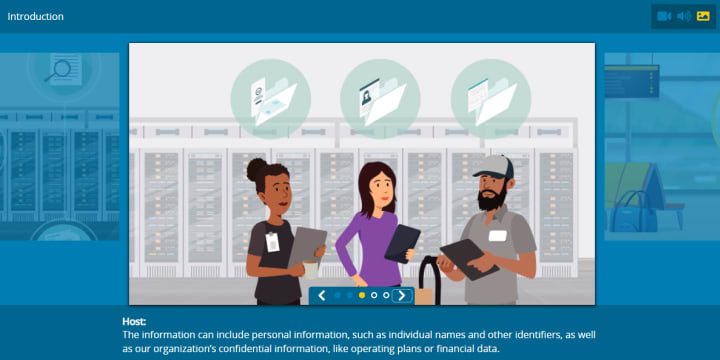You might have yet to hear of the NIS2 Directive, but you should be aware of it if you’re in any sector that relies on digital infrastructure. Whether you’re a business owner, IT professional, or curious about how the EU handles cybersecurity, the NIS2 Directive is a game changer.
What is the NIS2 Directive all about?
First, the NIS2 Directive, formally known as Directive (EU) 2022/2555, is a piece of legislation adopted by the European Union to up the ante on cybersecurity. It builds upon the original NIS Directive, which focused on the security of networks and information systems. However, it takes things a step further to address the ever-evolving landscape of cyber threats. If the original NIS Directive laid the groundwork, NIS2 is the complete renovation.
The Directive aims to enhance cybersecurity and digital resilience across the entire EU, ensuring that member states and companies operating within the Union maintain high standards. It’s all part of the EU’s strategy to create a safer digital space where cyber incidents can be managed effectively, whether caused by hackers, system failures, or even natural disasters.
Who does it apply to?
The scope of NIS2 is much broader than the original Directive. It doesn’t just target tech companies or prominent digital service providers. Instead, it introduces two categories of regulated entities: essential entities and important entities.
Essential entities: Industries considered vital to society and the economy. Think energy, healthcare, transportation, financial services and digital infrastructure. If a cyberattack disrupts these sectors, the fallout could be massive.
Important entities: These may not be as critical as the essential ones but still have significant consequences should they fail. Sectors like postal services, food supply and chemical manufacturing fall under this category. While the impact of an attack on these sectors might not be catastrophic, it would still cause significant disruption.
If your organization falls into one of these categories, you must familiarize yourself with NIS2.
What does it mean for businesses?
So, what’s the big deal for businesses that now fall under NIS2? The Directive places new obligations in a few key areas and meeting these requirements will be a challenge for some organizations.
Expanded scope and sectors
NIS2 applies to a much broader range of sectors than its predecessor. Industries like energy, transport, banking and healthcare are all covered, along with many more. This means many organizations that never had to think about cybersecurity at this level now need to step up their game. For some, the regulatory burden of compliance could be a bit overwhelming, especially if they still need strong cybersecurity measures.
Increased cybersecurity obligations
Under NIS2, more than having some firewalls and anti-virus software is required. Businesses must adopt comprehensive risk management measures, including policies for incident response, supply chain security and business continuity plans. It’s about being proactive rather than reactive when it comes to cybersecurity. Regular security assessments, staff training and staying on top of software updates are a few things companies will need to prioritize.
Mandatory training
Member States must require that members of vital entities’ management bodies undergo training. They should also encourage essential entities to regularly provide similar training for their employees, ensuring they acquire the knowledge and skills necessary to identify risks, evaluate cybersecurity risk management practices and understand their impact on the services provided by the entity.
Incident reporting
NIS2 has some of the strictest incident reporting requirements. Organizations are required to notify authorities of significant incidents within 24 hours of discovering them. Failing to meet this deadline could result in penalties, so a solid incident detection and response process is crucial. Quick and accurate reporting is the game’s name here, and the clock is always ticking.
Harmonization across the EU
One of the primary goals of NIS2 is to harmonize cybersecurity regulations across the EU. In theory, this means all member states will follow the same rules, making it easier for companies operating in multiple countries to stay compliant. However, there are still challenges in aligning with varying interpretations of the Directive across different regions.
Liability and governance
NIS2 places greater responsibility on senior management. Leaders can’t just delegate cybersecurity to their IT teams and call it a day. They are expected to be involved in overseeing cybersecurity policies and ensuring compliance. In some cases, if a company fails to meet its obligations, senior management could be held personally liable.
Supply chain security
One of the trickiest parts of NIS2 is its focus on supply chain security. Organizations must evaluate and manage the cybersecurity risks posed by third-party vendors. This is no small feat, especially for companies relying on a complex web of suppliers. Ensuring your partners are as secure as you are going to take time and resources.
Fines and penalties
The Directive also introduces stricter enforcement and higher penalties for non-compliance. Businesses that fail to meet the requirements could face hefty fines and the reputational damage of a cyber incident could be even worse. Compliance isn’t optional if you want to avoid these risks.
How to comply with the NIS2 Directive
It is not all doom and gloom if your company is subject to NIS2. You can take steps to ensure compliance and, more importantly, enhance your overall cybersecurity posture. Here are a few high-level best practices to consider:
- Implement risk management measures, including regular security assessments, encryption and ongoing staff training
- Ensure timely incident reporting: Have a straightforward procedure for detecting, assessing and reporting incidents to authorities within the required timeframe
- Focus on governance and accountability: Make cybersecurity a priority at the executive level and assign clear oversight roles
- Secure your supply chain by evaluating the security practices of your third-party vendors and ensuring they meet the necessary standards
- Develop and test response plans: Have a business continuity plan that you regularly test and update to ensure minimal downtime during an attack
- Leverage purpose-built tools to help with compliance, like the NAVEX One platform
The NIS2 Directive is a big step in enhancing cybersecurity across the EU. While the challenges for businesses are significant, they’re manageable. By taking a proactive approach to cybersecurity, companies can avoid penalties and protect themselves from the growing threat of cyberattacks.
A comprehensive governance, risk and compliance (GRC) platform helps organizations manage NIS2 compliance by streamlining incident reporting, providing cybersecurity training and consolidating risk management processes. NAVEX One can help smooth the path to compliance, making the process more manageable. If you’re in an industry affected by NIS2, now’s the time to start preparing.
Find out more about how NAVEX One solutions can help your company to comply with NIS2 requirements.


